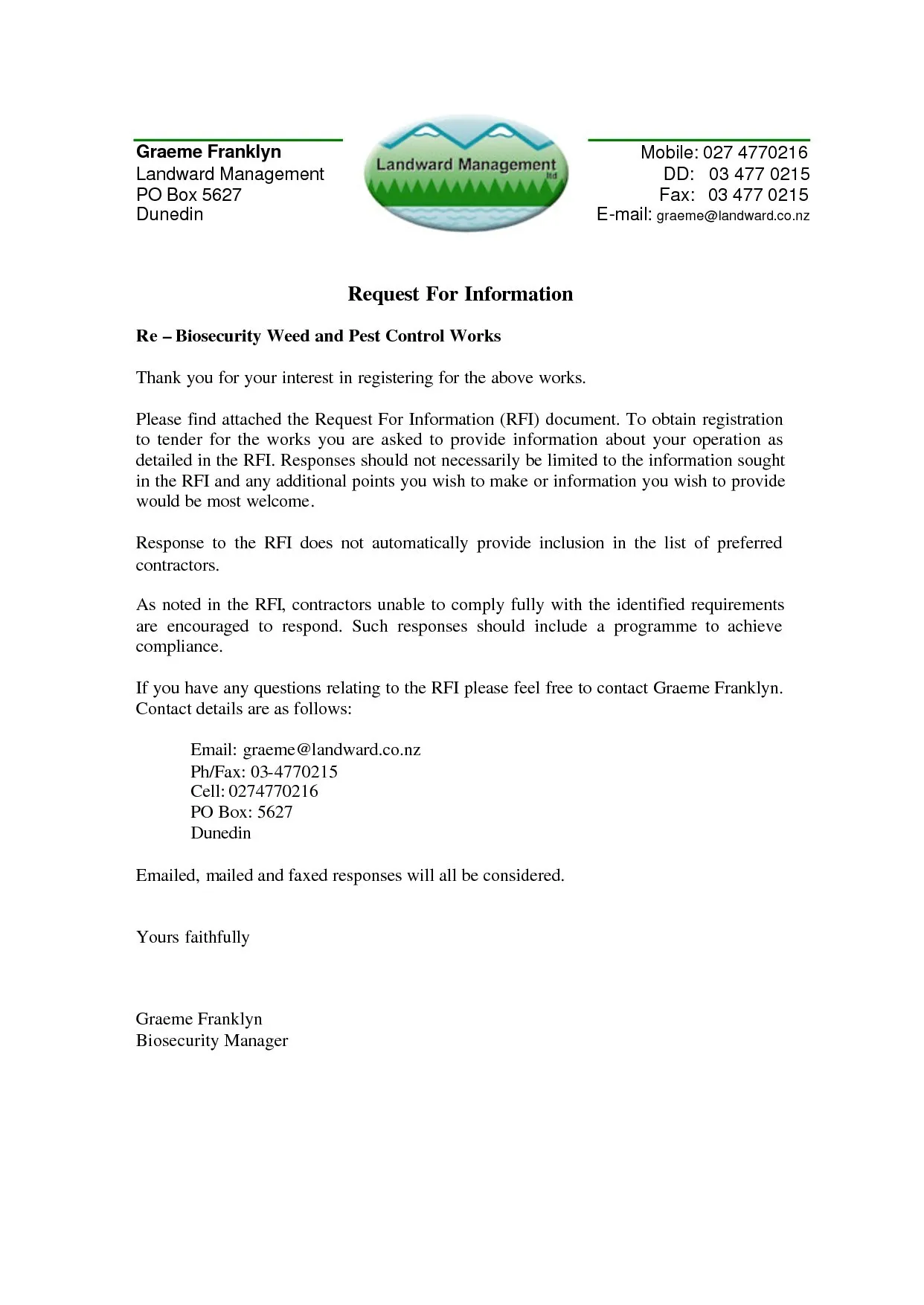What is an RFP Response Cover Letter
An RFP (Request for Proposal) response cover letter is a critical document that accompanies your proposal submission. It serves as your introduction and a concise summary of why your company is the best fit for the project or service outlined in the RFP. Often, it’s the first impression you make on the evaluation committee, so crafting a compelling cover letter is essential to make a positive impact and increase your chances of winning the contract. The cover letter demonstrates your understanding of the project and showcases your capabilities in a clear, professional manner. It should be tailored to each specific RFP, highlighting your unique value proposition and addressing the client’s needs.
The Purpose of a Cover Letter
The primary purpose of the cover letter is to capture the reader’s attention and persuade them to delve deeper into your proposal. It sets the stage for your entire response, providing a snapshot of your company’s qualifications, experience, and understanding of the client’s requirements. The letter should clearly state your interest in the project, reiterate your commitment to delivering exceptional results, and briefly touch upon the key benefits of choosing your company. Ultimately, its goal is to convince the evaluation committee that your proposal is worth considering and that your company is the ideal partner for the project, so it should be professional and concise.
Why a Cover Letter is Crucial
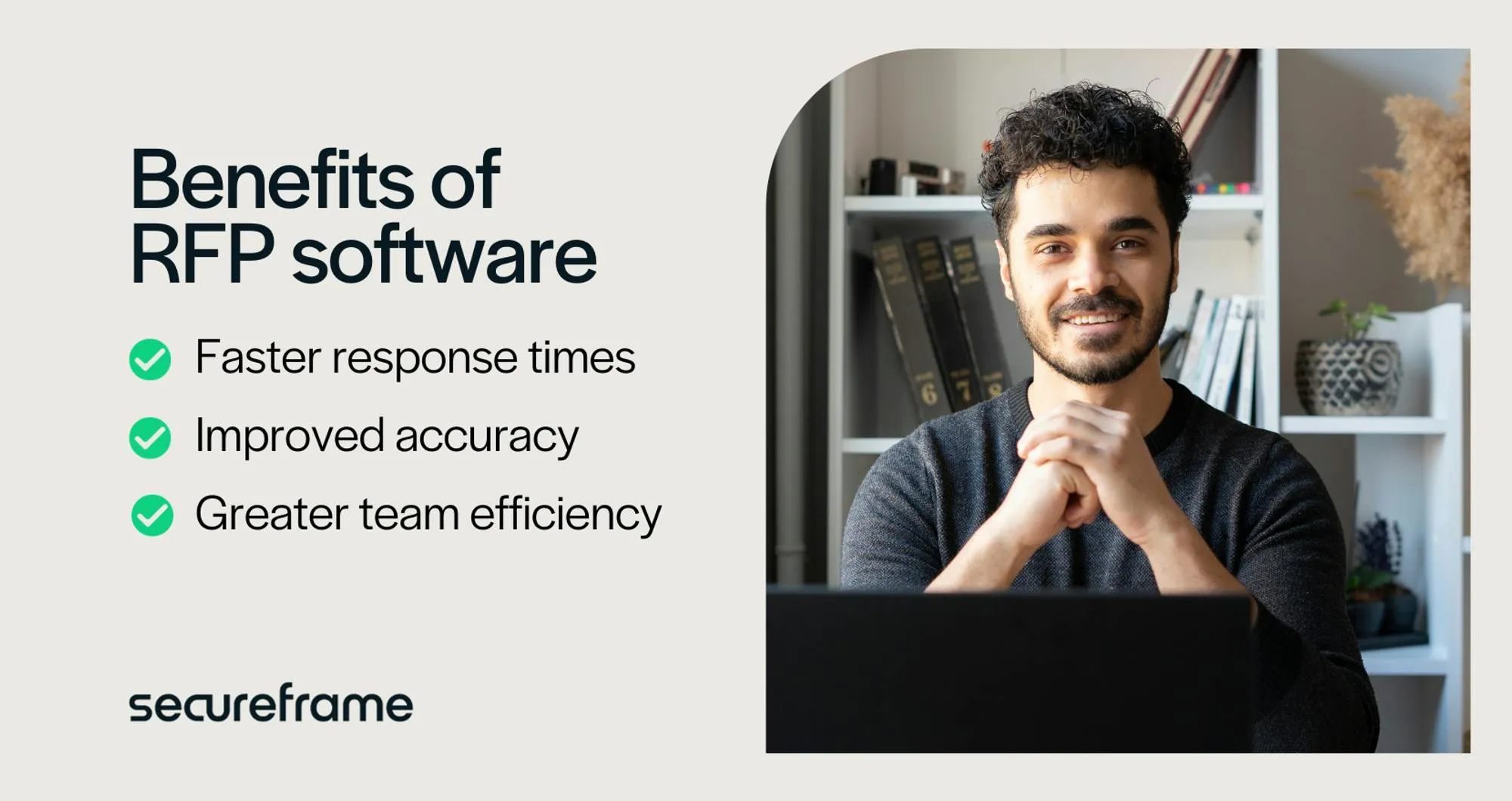
A well-written cover letter significantly increases your chances of success. It provides context for your proposal, helping the client understand your approach and the value you bring. By addressing the client’s specific needs and showcasing your relevant experience, you demonstrate that you’ve taken the time to understand the project and are capable of delivering the desired outcomes. A well-crafted cover letter highlights your company’s unique selling points, differentiating you from the competition and making you stand out in a crowded field of proposals. Additionally, it shows professionalism and attention to detail, which can be the deciding factor when clients evaluate multiple submissions, and it may improve your chances of getting the job.
Top 5 Tips to Win with Your RFP Response Cover Letter
Creating a winning RFP response cover letter requires careful planning and execution. To maximize your chances of success, consider these essential tips. Tailoring your letter to each specific RFP is crucial to demonstrate that you understand the client’s needs and have the right solutions. Highlighting your unique value proposition and showcasing your relevant experience are also essential to make your company stand out. Keep your letter concise, clear, and easy to read, using strong action verbs and avoiding jargon. Proofreading meticulously to eliminate errors and ensure proper formatting is critical to present a professional image. Finally, always end with a strong call to action, expressing enthusiasm and providing clear contact information.
Tip 1 Tailor to the RFP
Avoid sending generic cover letters. Each RFP requires a tailored response that addresses the specific requirements and objectives outlined in the document. Review the RFP thoroughly, identifying the key needs, challenges, and desired outcomes. Use the cover letter to demonstrate that you’ve understood these elements and have tailored your proposal to meet them. Refer directly to the client’s needs, using their language where appropriate. This shows that you understand their unique situation and are committed to providing a solution that meets their specific requirements, and it will show the client that you have put the work in.
Highlight Relevant Qualifications
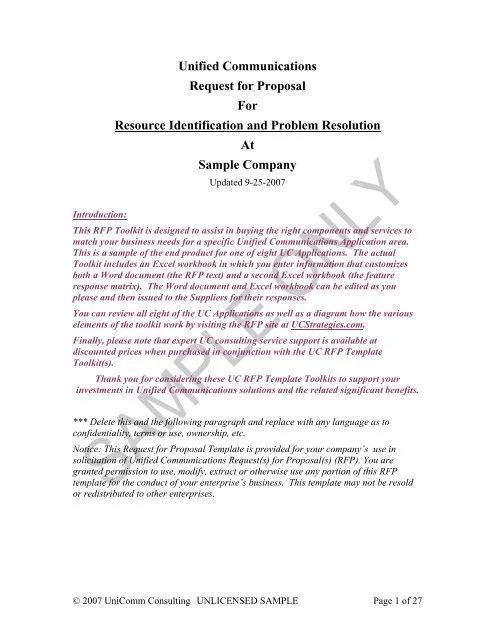
Focus on the qualifications, experience, and expertise that are most relevant to the specific RFP. Don’t list every detail of your company’s history; instead, select the achievements, skills, and projects that directly align with the client’s needs. Provide specific examples of past successes, highlighting how you have solved similar challenges or achieved similar results in the past. This shows the client that you have a proven track record and can deliver the desired outcomes, giving them confidence in your capabilities, and allowing you to prove you are the perfect candidate for the role.
Demonstrate Understanding of Needs
Show the client that you understand their needs by referencing the key issues, challenges, and objectives outlined in the RFP. Use your cover letter to demonstrate that you’ve thoroughly reviewed the document and comprehend the scope of the project. Briefly summarize your understanding of the client’s goals and explain how your proposed solution will help them achieve those goals. By showing that you’ve taken the time to understand their specific situation, you make it clear that you’re committed to delivering a tailored solution that meets their unique needs, and it is much more likely you will get chosen.
Tip 2 Showcase Your Value Proposition
Clearly articulate your unique value proposition in the cover letter. This is what sets your company apart from the competition. What makes you the best choice for this project? Highlight your core strengths, competitive advantages, and any unique solutions or approaches you bring to the table. Focus on the specific benefits the client will receive by choosing your company, such as cost savings, improved efficiency, or enhanced results. Clearly communicate how your company will deliver exceptional value, setting the stage for the rest of your proposal and showcasing your expertise.
Quantify Achievements
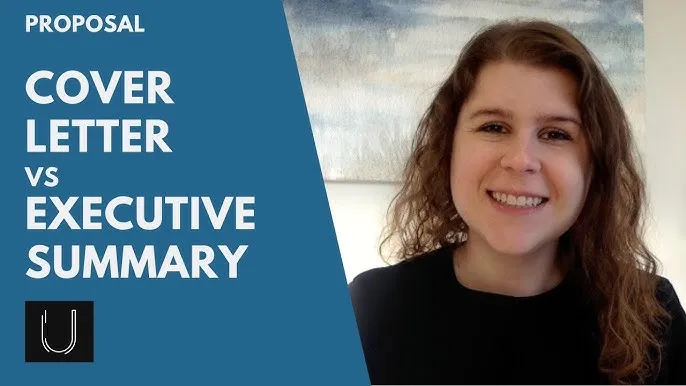
Instead of simply stating your achievements, quantify them whenever possible. Use numbers, percentages, and statistics to demonstrate the impact of your work and the value you’ve provided to past clients. For example, rather than saying you ‘improved efficiency,’ state that you ‘increased efficiency by 20%.’ This adds credibility to your claims and helps the client understand the tangible benefits of working with your company. Quantifiable data provides compelling evidence of your company’s capabilities and the value you can deliver, giving them the information needed to make a decision.
Focus on Benefits, Not Just Features
While it’s important to highlight the features of your products or services, focus primarily on the benefits those features provide to the client. Instead of listing what you offer, explain how those offerings will solve their problems, improve their outcomes, or help them achieve their goals. Describe the tangible advantages the client will experience by choosing your company. This helps the client understand the value of your proposal and makes it easier for them to make an informed decision, which could lead to them picking you for the job.
Tip 3 Keep it Concise and Clear
RFP evaluation committees often have to review many proposals, so it’s crucial to be concise and clear in your cover letter. Avoid jargon, overly technical language, or unnecessary details. Get straight to the point, and present your key messages and value proposition in a clear, easy-to-understand manner. Focus on the most important information, and make it easy for the reader to grasp your key points quickly. A concise and clear cover letter is more likely to capture the reader’s attention and leave a positive impression, increasing your chances of success, and getting you the job you want.
Use Strong Action Verbs
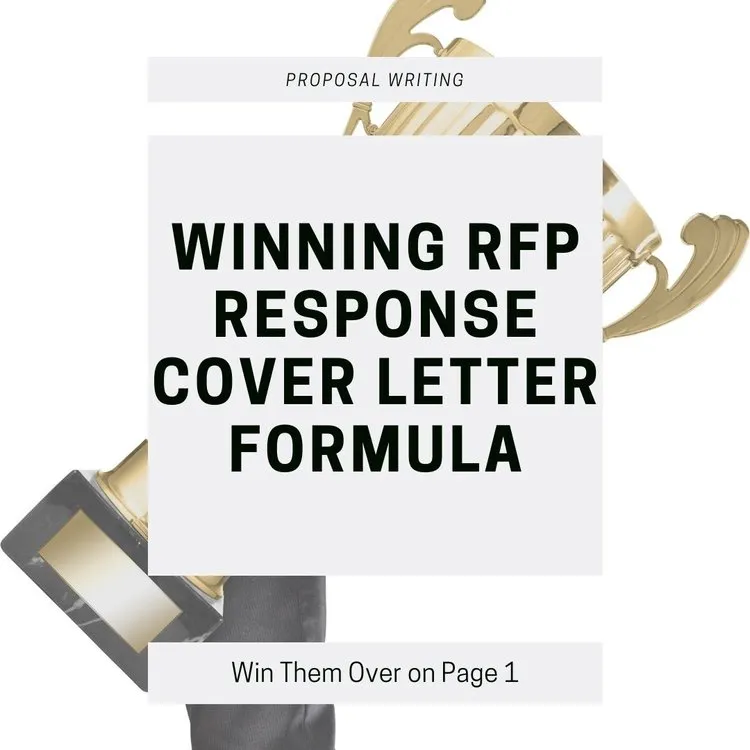
Start sentences with strong action verbs to convey confidence and drive. Avoid passive language, and make your statements direct and impactful. Instead of saying, ‘We were responsible for managing the project,’ say, ‘We managed the project.’ Action verbs make your writing more dynamic and engaging, and they convey a sense of competence and leadership. This helps the client understand your capabilities and makes your cover letter more compelling, so make sure to use action words to make your proposal sound better.
Avoid Jargon
Avoid using technical jargon or industry-specific terminology that the client may not understand. Your cover letter should be accessible to a wide audience, so use clear, simple language that is easy to read and comprehend. While it’s fine to reference your company’s expertise, be careful not to overwhelm the client with overly technical language. Make sure the document is easy to read and digest, and it will improve your odds of being chosen.
Tip 4 Proofread Meticulously
Proofreading is critical to ensure that your cover letter is free of errors and presents a professional image. Even minor mistakes can undermine your credibility and give the impression that your company pays little attention to detail. Proofread multiple times, and consider having someone else review your letter before submitting it, as a fresh pair of eyes can often catch errors you might miss. Always proofread to make sure there are no errors.
Check for Grammar and Spelling Errors
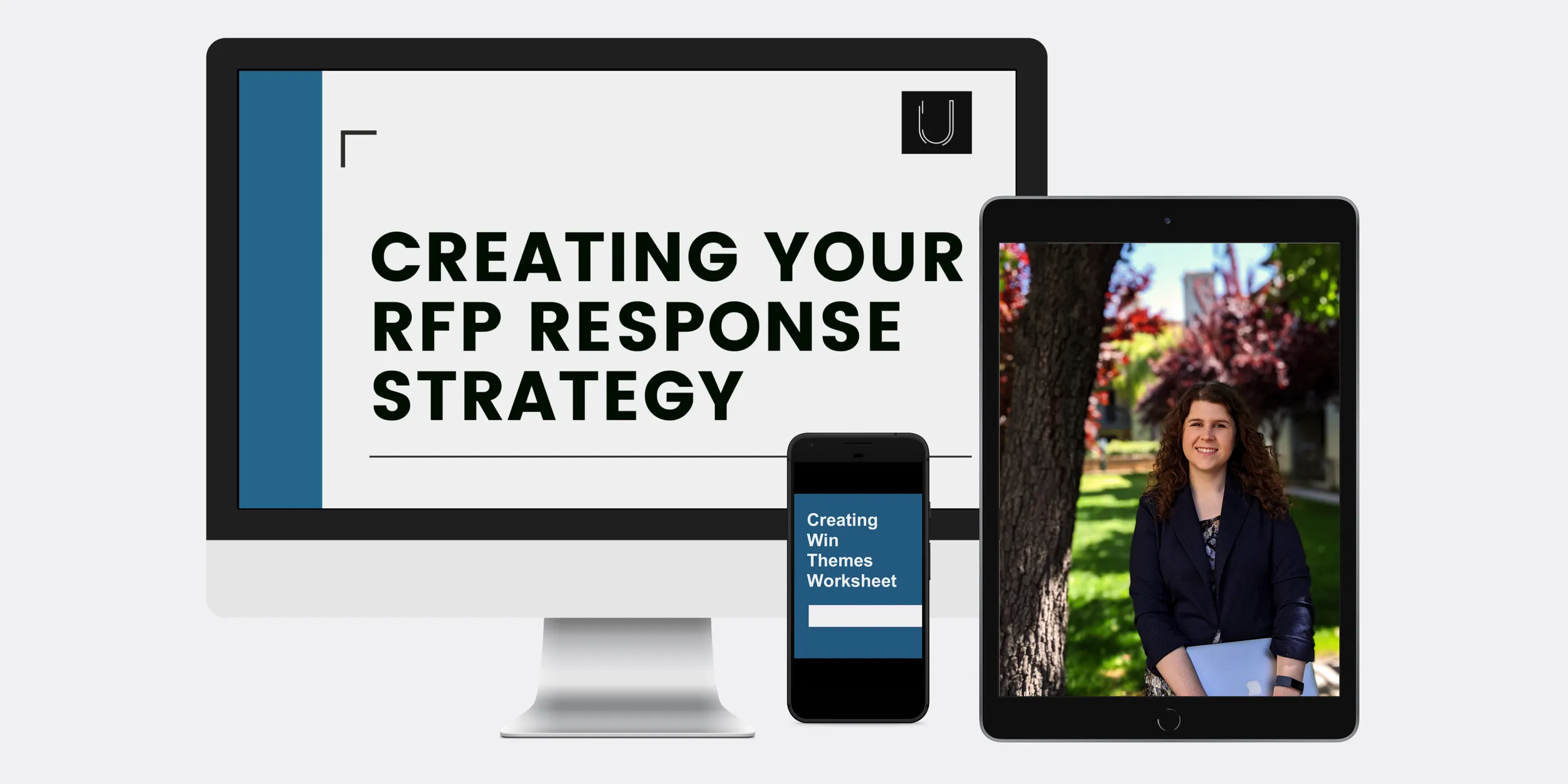
Carefully check your cover letter for any grammar or spelling errors. These mistakes can distract the reader and damage your credibility. Use a grammar checker and a spell checker, but don’t rely solely on these tools, as they may not catch all errors. Read the letter aloud to identify any awkward phrasing or unclear sentences. Proofread your cover letter to make it better, and double check everything before sending.
Ensure Proper Formatting
Ensure that your cover letter is properly formatted, with clear headings, subheadings, and white space. A well-formatted document is easier to read and conveys professionalism. Use a standard font, and make sure the font size is appropriate. Maintain consistent margins and spacing. Proper formatting helps the reader navigate your letter and find the key information quickly, improving the overall impression of your proposal and making you look professional.
Tip 5 End with a Strong Call to Action
A strong call to action encourages the client to take the next step. Clearly state what you want the client to do next, such as review your proposal, contact you for a meeting, or request additional information. Be specific and direct, and make it easy for the client to respond. The call to action should be clear, concise, and action-oriented, giving the client an idea of the next steps to take, and getting them on board.
Express Enthusiasm
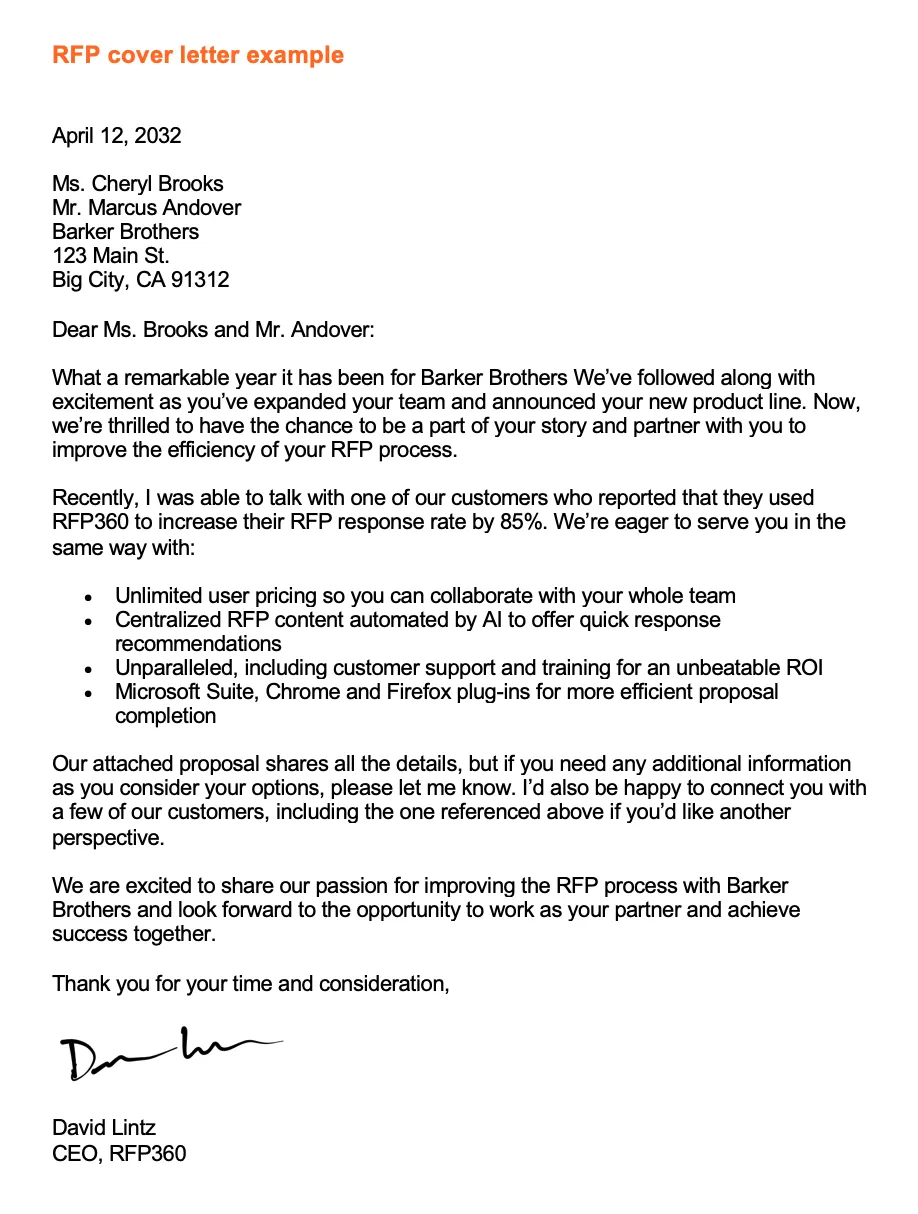
Express your enthusiasm for the project and your eagerness to work with the client. Convey a positive and confident tone, and let the client know that you’re excited about the opportunity to contribute to their success. Show your commitment to the project and make it clear that you are invested in the outcome. Make sure the client knows you are looking forward to working with them.
Provide Contact Information
Include your contact information, such as your name, title, company, phone number, and email address. Make it easy for the client to reach you with any questions or to discuss the proposal further. Provide multiple contact options, so they can choose the method that’s most convenient for them. Providing easy contact information makes the client more likely to reach out to you. Make it as simple as possible for the client to contact you.
Formatting Your RFP Response Cover Letter
Proper formatting enhances readability and professionalism. Adhere to standard business letter conventions. Start with a clear header, including your company’s information and the date. Use a professional font, appropriate margins, and consistent spacing. Follow a logical structure with a clear salutation, body paragraphs, and a closing statement. Ensure your formatting is consistent throughout the document, creating a polished and professional look, making your document visually appealing, and easy to read.
Header and Contact Information
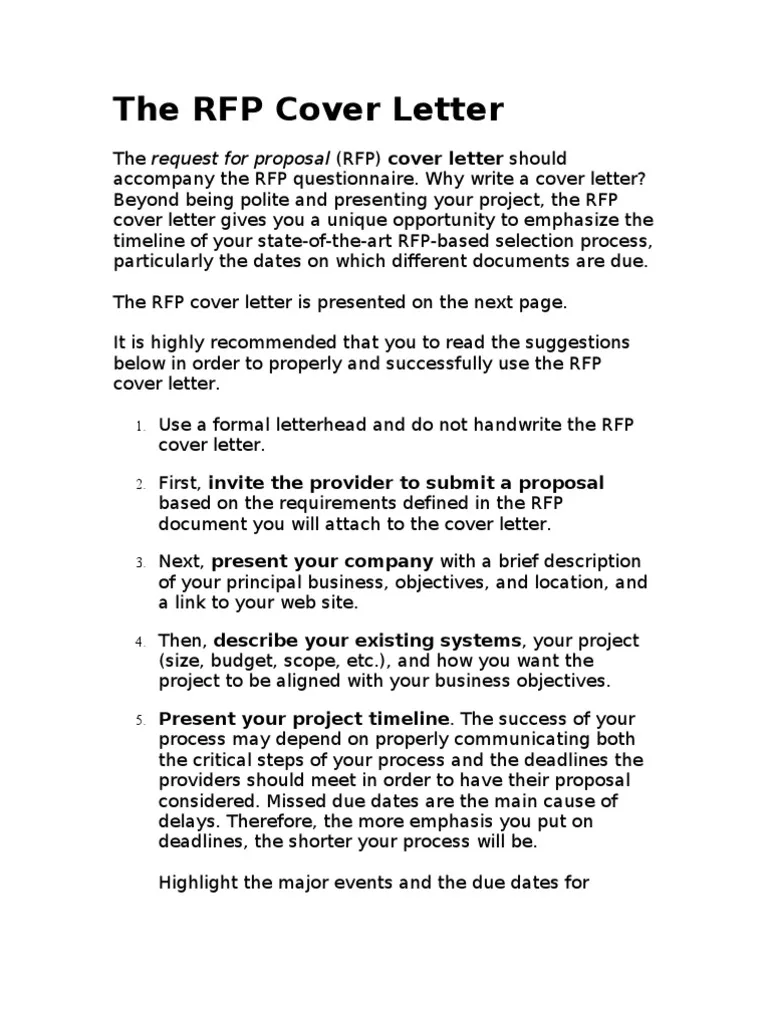
Start with a header that includes your company’s name, address, phone number, and email address. Then, include the date, followed by the client’s contact information, such as their name, title, and company name. This structure provides a clear and professional introduction, immediately identifying your company and the recipient of the letter. Including all this information is the start of a successful proposal.
Salutation
Use a professional salutation. If you know the name of the person reviewing the proposals, address the letter to them directly. For instance, use “Dear Mr./Ms. [Last Name].” If you don’t know the contact person, use a general salutation like “Dear Selection Committee” or “To Whom It May Concern.” It is much better to address the letter to a specific person, rather than use a more generic greeting. Doing this shows that you have done your research.
Body Paragraphs
The body of the cover letter should be divided into well-structured paragraphs, each focusing on a specific aspect of your proposal. Start with a brief introduction that states your interest in the project. Then, highlight your key qualifications, your unique value proposition, and your understanding of the client’s needs. Provide specific examples and quantifiable results to support your claims. End with a clear call to action. The goal is to provide enough information to get the attention of the client.
Closing and Signature
End your cover letter with a professional closing, such as “Sincerely,” “Respectfully,” or “Thank you.” Include your typed name, your title, and your company. If you’re submitting a hard copy, sign the letter above your typed name. A professional closing and signature add a final touch of professionalism. This is the final touch to your proposal. This will give the client a good impression and put you in the best position to be chosen.
By following these tips, you can craft a compelling RFP response cover letter that captures the attention of the evaluation committee and significantly increases your chances of winning the contract. Remember to tailor your letter to each specific RFP, showcase your value proposition, keep it concise and clear, proofread meticulously, and end with a strong call to action, and these things will ensure you get the best possible result. Good luck!
